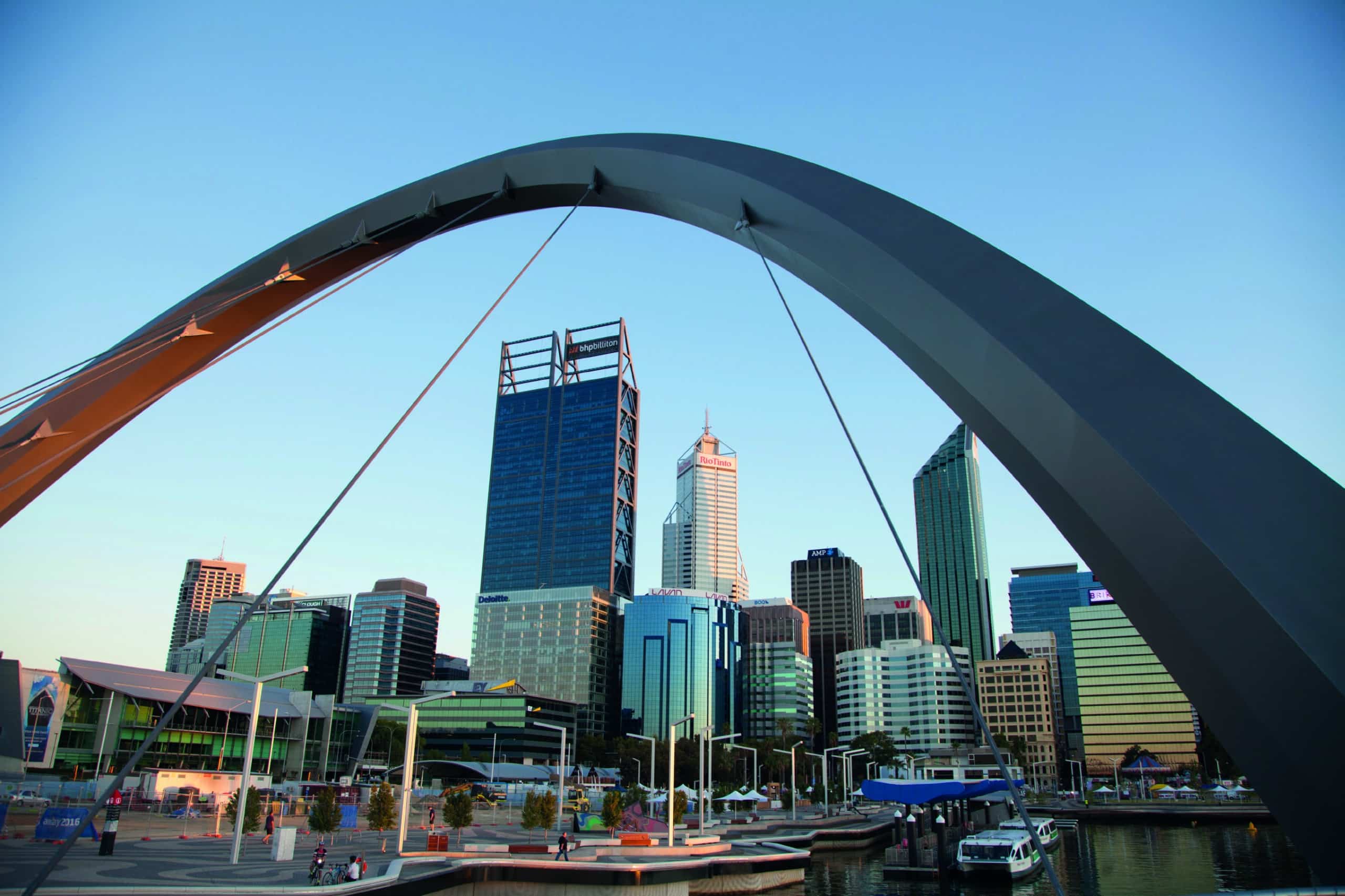Crews undertaking sustainment work on the Royal Australian Navy’s ANZAC class of ships are sailing through their daily tasks since the opening of a $5 million support tower late last year.
The movable tower, which has two gangways on the upper levels enables direct access to the ships dry berthed on either side at BAE Systems’ Henderson shipyard.
The tower allows all teams quick access between to the ships and amenities and meeting areas, as well as high-tech features including 3D scans, virtual reality, sound proof command centre and production and performance schedules.
BAE Systems Australia Project Manager Jules Moore says with up to 600 people onsite including staff and contractors, they were needing to go to many different parts of the shipyard for different purposes.
“We actually mapped it out in kilometres and they were going all the way down there for the toilet, over somewhere else for a cup of tea, another area for a supervisor, the other side of the yard for materials,” he said, on a tour of the facility late last year.
“The idea of the tower is that for the 10 or 11 things they walk away from the work front for, that they can be within two minutes of any of the 300 compartments on the ship.”
He said the tower had upskilled how production was carried out across the ANZAC Mid Life Capability (AMCAP) upgrade program as part of the Warship Asset Management Agreement (WAMA) between BAE Systems, SAAB Australia, Naval Ship Management (NSM) and the Commonwealth of Australia.
“What you want to be able to do is see an issue emerging and go straight to a phone call within 60 seconds. … then we can get roadblocks cleared, which gives us the benefit of production efficiencies,” he said.
“I think it’s around $7-8 million saving just for AMCAP but when you look at the programs for 10-15 years it’s considerably more than that.”
Moore says management and leadership teams were also within minutes of the 300 different work compartments on each warship.
“So there’s no reason not to be walking the ship five to six times a day and that visibility will yield the safety benefits and having the people operate as one team,” he said.
BAE Systems Australia Director Maritime Darren Kirkby said the investment – which will see about 2.4 million hours of work invested in the fleet of eight ships – was important for the AMCAP program and the work that will be undertaken until 2023.
“It’s also a valuable asset for future naval sustainment and upgrade programs undertaken at our site and within the Henderson precinct,” he said.
“We are already seeing the benefits of having key support functions consolidated and located closer to the work front. This project was about facilitating collaboration between alliance partners and we can see where BAE Systems and NSM employees are now collocating on a more effective level.”
While the Anzac class frigates may have been around for decades, with the prime contractor named in 1989 and frigates commissioned between 1996 and 2006, sustainment teams have been working off PDF drawings until about four years ago.
The whole ship has now been scanned to generate a baseline 3D model, with a master modeller brought in to consolidate about 30 designs and configure the differences between the frigates.
Grants for defence exports
Meanwhile, the Federal Government has announced matched Defence Global Competitive grants of up to $150,000 to help SMEs overcome barriers to accessing export opportunities.
Find out more here.












